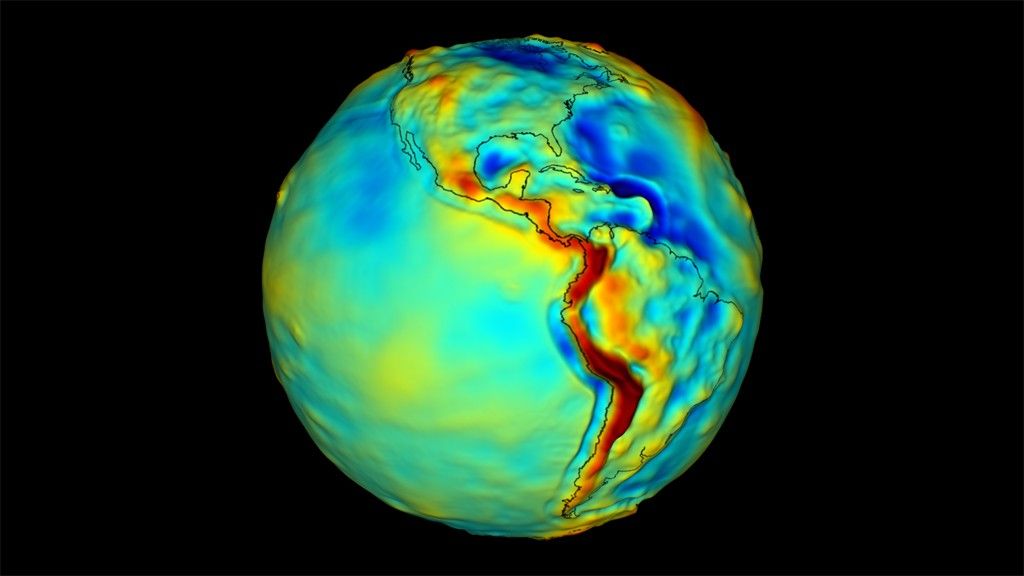Insider Brief:
- NASA’s Jet Propulsion Laboratory is developing the first space-based quantum gravity gradiometer, using ultra-cold rubidium atoms to detect gravitational anomalies with high precision from orbit.
- The Quantum Gravity Gradiometer Pathfinder (QGGPf) will test atom interferometry-based sensing in space, with potential sensitivity up to ten times greater than classical gravity sensors.
- The mission is supported by collaborations with companies like AOSense, Infleqtion, and Vector Atomic, which are contributing sensor head and laser system technologies.
- Scheduled for launch by the end of the decade, QGGPf is intended to validate space-based quantum sensing and inform future Earth and planetary science missions.
- Image Credit: NASA
NASA’s Jet Propulsion Laboratory, in partnership with small businesses and academic collaborators, is preparing to launch the first space-based quantum gravity gradiometer. The Quantum Gravity Gradiometer Pathfinder (QGGPf), supported by NASA’s Earth Science Technology Office, will test a suite of quantum sensing technologies for mapping Earth’s gravity field from orbit.
According to a NASA news release, the mission is intended to demonstrate how quantum sensors—specifically those based on ultra-cold atom interferometry—can be used to detect gravitational anomalies with high precision. These variations in gravity, caused by mass redistribution beneath Earth’s surface, are essential for applications ranging from water resource management to subsurface geology and national security.
How It Works: Ultra-Cold Atoms and Gravity Gradients
QGGPf will use clouds of rubidium atoms cooled to near absolute zero as test masses. At this temperature, the atoms behave as matter waves, enabling precise comparisons of gravitational acceleration between two points in space. Gravity gradiometers measure the difference in how fast two test masses fall over short distances—a quantity known as the gravity gradient. Stronger gravitational fields cause greater acceleration, allowing researchers to detect minute variations in mass distribution.
As noted in the release, the use of ultra-cold atoms in space enables higher accuracy and longer-duration measurements compared to classical mechanical test masses. “With atoms, I can guarantee that every measurement will be the same,” said Sheng-wey Chiow, an experimental physicist at JPL. Atom-based sensors are less prone to drift and thermal noise, which improves measurement stability over time.
QGGPf’s core sensor will be compact, occupying roughly 0.25 cubic meters and weighing about 125 kilograms—much smaller than traditional spaceborne gravity instruments. Despite its size, the quantum system is expected to reach sensitivities up to ten times greater than existing classical sensors, based on prior estimates. While the primary goal of the mission is to validate the technology in space, the results could also be used to inform future missions across both Earth science and planetary exploration.
Towards Advancing Quantum Technologies in Space
The project is exemplary of efforts by NASA to integrate quantum technologies into its science missions. “We need to fly it so that we can figure out how well it will operate,” said Ben Stray, a postdoctoral researcher at JPL. “That will allow us to not only advance the quantum gravity gradiometer, but also quantum technology in general.”
The instrument will rely on a series of subsystems developed through public-private collaboration. JPL is working with AOSense and Infleqtion to advance the atom interferometry-based sensor head, while NASA’s Goddard Space Flight Center is partnering with Vector Atomic to develop the laser systems necessary for manipulating and measuring the atomic clouds.
Atom Interferometry and Measurement Precision
Atom interferometry, the technique used in the QGGPf, is based on splitting and recombining matter waves to measure phase shifts caused by gravitational forces. These phase shifts are directly proportional to differences in acceleration experienced by the atomic clouds. By comparing two such clouds in free-fall, the gradiometer can map gravitational gradients with high spatial resolution.
JPL’s Chief Technologist for Earth Science and director of the Quantum Space Innovation Center, Jason Hyon, emphasized the potential of atom-based sensing in a recent paper published in EPJ Quantum Technology. He noted that technologies like QGGPf could one day enable the measurement of features such as underground water reservoirs and mineral deposits from orbit using quantum instrumentation.
Applications and Future Potential
The Earth’s gravitational field is not static—it shifts over time due to tectonic motion, melting glaciers, groundwater extraction, and other geophysical processes. Accurately tracking these changes are relevant for environmental policy and to improve climate models. NASA has previously relied on missions such as GRACE and GRACE-FO for gravity measurements, but QGGPf introduces an entirely new sensing modality that may augment or eventually replace traditional gravimetry missions.
While the launch is targeted for the end of the decade, the QGGPf will primarily serve as a technology pathfinder. The success of this mission could lead to operational quantum gravity missions and further development of compact, high-precision quantum instruments for Earth observation and planetary science.




0 Comments